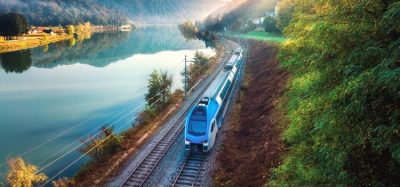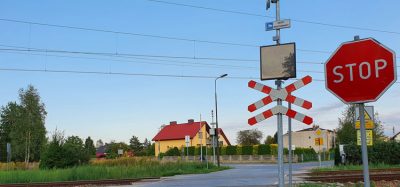Swiss transport policy: top quality service thanks to modern infrastructure
Posted: 21 July 2009 | | No comments yet
On 20 February 1994, a major political surprise occurred when, against all expectations, the Swiss voting population agreed upon a popular initiative to protect the Alps from transit traffic. This popular decision set the tone for a new Swiss transport policy. From then on, the goal of shifting freight transport through Switzerland from road to rail was anchored in the Constitution. This was the starting gun for the extension and modernisation of rail infrastructure in Switzerland, a process that is already far advanced, although still some way from completion.
On 20 February 1994, a major political surprise occurred when, against all expectations, the Swiss voting population agreed upon a popular initiative to protect the Alps from transit traffic. This popular decision set the tone for a new Swiss transport policy. From then on, the goal of shifting freight transport through Switzerland from road to rail was anchored in the Constitution. This was the starting gun for the extension and modernisation of rail infrastructure in Switzerland, a process that is already far advanced, although still some way from completion.
On 20 February 1994, a major political surprise occurred when, against all expectations, the Swiss voting population agreed upon a popular initiative to protect the Alps from transit traffic. This popular decision set the tone for a new Swiss transport policy. From then on, the goal of shifting freight transport through Switzerland from road to rail was anchored in the Constitution. This was the starting gun for the extension and modernisation of rail infrastructure in Switzerland, a process that is already far advanced, although still some way from completion.
Seven years previously, the Swiss population voted for a quantum leap in concepts of public transport: the ‘Bahn 2000’ plan, a package of numerous measures. Thanks to a new key stretch constructed on the major transport routes through Switzerland, and the introduction of the cutting-edge ERTMS train control system, a new era was ushered in for Swiss rail passengers. Journey times between the largest Swiss railway stations are now under one hour, making short connection times possible within the timetable, in all directions. Combined with departures every hour or even half-hour throughout all operating hours, and with coordinated bus connections, ‘Bahn 2000’ offers a service of high quality and quantity to passengers.
The success of this policy can clearly be measured: in no other country in Europe do people use public transport as much as in Switzerland. And comparing freight transport, Switzerland also comes out well: while in Switzerland two thirds of transit freight is carried by rail and only one third by lorries on the roads, the proportions are reversed in our neighbours France and Austria, with two thirds transported by road and only one third by rail.
But our final goal has not yet been achieved, and to maintain and extend the service and the quality for both goods and passenger transport, the modernisation of the railway network is continuing.
On the two transit axes through the Alps, Switzerland is building the New Rail Link through the Alps (NRLA). Its key elements are new railway base tunnels; the Lötschberg base tunnel (35km) was completed in 2007 after only eight years construction time. The 57km tunnel being built through the Gotthard will one day be the longest railway tunnel in the world. The work is far advanced and opening is planned for 2017.
And the rest of Switzerland’s railway network is also being upgraded: an extension project known as ZEB (Zukünftige Entwicklung Bahninfrastruktur – future development of rail infrastructure) and costing €3.6 billion has been approved and is currently in the stage of implementation planning. Parliament has already commissioned the next step: ‘Bahn 2030’ is intended to bring further improvements over the next 20 years. The Federal Office of Transport together with the SBB is drawing up the foundations for political decision-making. Investments of €8 billion or €14 billion are planned. The central goal is always to provide an optimum service for customers, whether in freight or passenger transport.
These investments of billions pay off; mobility is a basic human need of our time, as growth rates in transport clearly show. And Switzerland wants to manage this transport sustainably: providing top-quality service in public transport takes pressure off the roads. The economy benefits – but so does the environment, and therefore all of us. Densely populated Switzerland, at the heart of Europe and an alpine region in need of protection, is particularly sensitive to that.
In their popular votes, Swiss citizens have repeatedly confirmed the mandate for sustainable public transport. We are putting this mandate into practice, step-by-step.
OUT NOW: The Definitive Guide to Rail’s Digital Future
The rail industry is undergoing a digital revolution, and you need to be ready. We have released our latest market report, “Track Insight: Digitalisation.”
This is not just another report; it’s your comprehensive guide to understanding and leveraging the profound technological shifts reshaping our industry. We move beyond the buzzwords to show you the tangible realities of AI, IoT, and advanced data analytics in rail.
Discover how to:
- Optimise operations and maintenance with real-time insights.
- Enhance passenger services through seamless, high-speed connectivity.
- Leverage technologies like LEO satellites to improve safety and efficiency.
Featuring expert analysis from leaders at Nomad Digital, Lucchini RS, Bentley Systems and more, this is a must-read for any rail professional.







